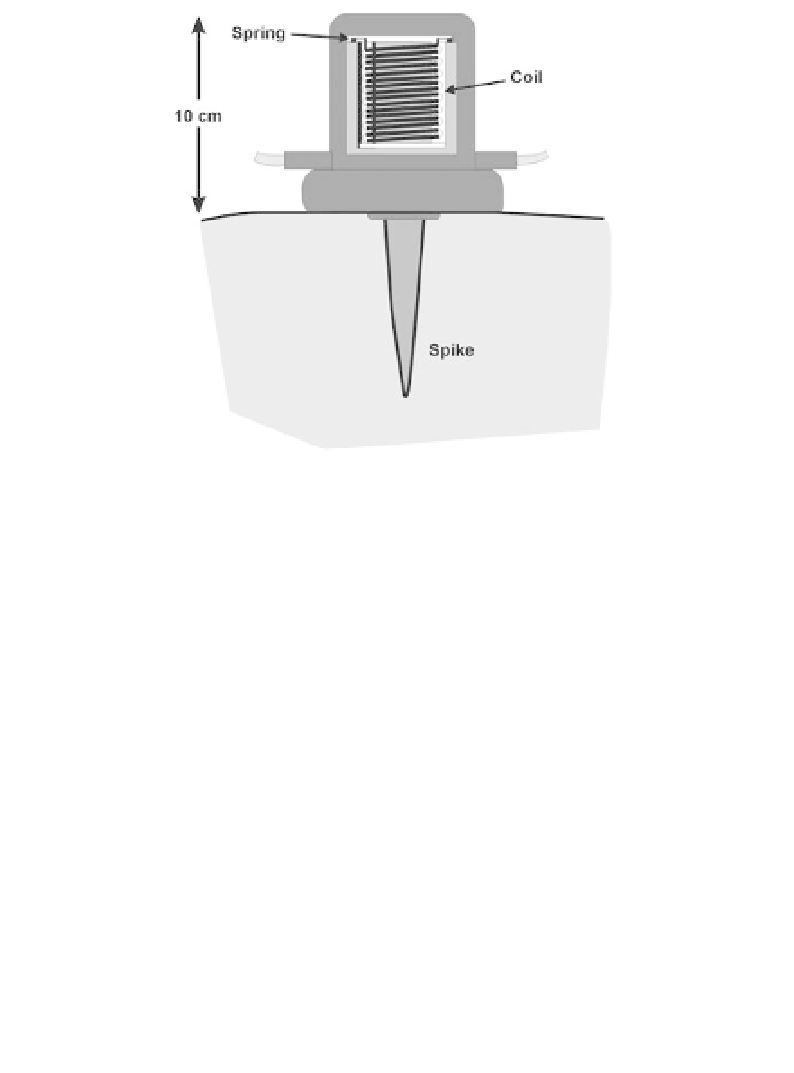Geology Reference
In-Depth Information
Figure 11.8
Moving coil geophone.
connected, give negative first-arrival pulses (
breaks
) for refractions and re-
flections, but may break either way for direct waves. In reflection work
using large offsets, or in refraction work where the velocity contrasts be-
tween overburden and deeper refractors are small, the rising wave-fronts
make relatively large angles with the vertical, and geophone discrimination
between S-waves and P-waves will be less good.
Geophone coils have resistances of the order of 400
, and damping
is largely determined by the impedance of the circuits to which they are
linked. The relative motion between coil and casing is also influenced by the
natural vibration frequency of the suspended system. At frequencies above
resonance, the response approximately replicates the ground motion, but
signals below the resonant frequency are heavily attenuated. Standard geo-
phones usually resonate at or below 10 Hz, which is well below the fre-
quencies useful in small-scale surveys. Response curves for a typical 10-Hz
phone are shown in Figure 11.9.
Geophones are remarkably rugged, which is just as well considering the
ways in which they are often treated. Even so, their useful lives will be
reduced if they are dumped unceremoniously from trucks into tangled heaps
on the ground. Frames can be bought or made to which they can be clipped
for carrying (Figure 11.10) and these can be good investments, but only if
actually used.

